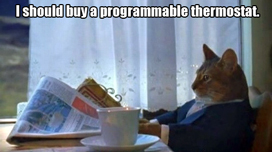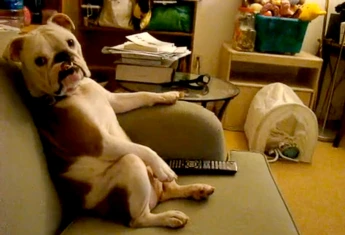86% of pet owners who leaver their electronics on for their pets sake, according to a survey conducted by #floridapowerandlight #FPL.
Pet owners may be spending more money on energy costs effort to keep their pets comfortable.
Here are some energy saving tips for pet owners
 Use a programmable thermostat. There is an obvious benefit to being able to program the thermostat for various times of day, but pet owners should also be reminded that pets are easier to please than most humans. The general rule is 78 degrees in the summer and 68 degrees in the winter-depending on the breed and a vet's recommendation.
Use a programmable thermostat. There is an obvious benefit to being able to program the thermostat for various times of day, but pet owners should also be reminded that pets are easier to please than most humans. The general rule is 78 degrees in the summer and 68 degrees in the winter-depending on the breed and a vet's recommendation.It's OK to turn off the ceiling fans. Fans for humans work particularly well when they facilitate the evaporation of sweat off the skin, cooling the person down. Dogs and cats don't sweat, so fans won't have the same effect. Plus, a thick coat may prevent a pet from feeling the breeze of fan at all.
It's also OK to turn off the lights. Pets, generally, don't need artificial light. motion sensors—will pick up animal motion as well, so these lights won’t work quite as well for you, especially if you have a particularly hyper cat or dog.
Birds don't do well in a draft. Protect pet birds from drafts, as most originate from tropical places and prefer warmer temperatures. Seal drafty windows and doors to keep pet birds comfortable.
 Install an energy efficient exit/entrance. Your doggie door—while useful—is probably not air tight, and it can suck conditioned air right out of your home, along with your hard-earned money. Look for a model with substantial sealing properties to keep air in. If you don’t want to replace your doggie door, make sure to keep your current one well-caulked.
Install an energy efficient exit/entrance. Your doggie door—while useful—is probably not air tight, and it can suck conditioned air right out of your home, along with your hard-earned money. Look for a model with substantial sealing properties to keep air in. If you don’t want to replace your doggie door, make sure to keep your current one well-caulked. Turn off the tube. Leaving televisions and radios on when you’re not home will only confuse your pet, and prevent it from napping. Toys and bones are much better entertainment, and they won’t cost you a dime on your power bill.
Turn off the tube. Leaving televisions and radios on when you’re not home will only confuse your pet, and prevent it from napping. Toys and bones are much better entertainment, and they won’t cost you a dime on your power bill.
Don’t make your bird resort to snuggling with another household pet to keep warm. Eliminate air leaks and drafts.
Don’t let a drafty house ruffle your bird’s feathers. ComEd’s “Little Bill” used to chirp about “cheap, cheap” electricity, but he was probably more concerned about the heating bill. Many pet birds originate from tropical locations and require warmer temperatures—they won’t like being kept near a leaky window or door. Be sure to move your pet bird away from drafty areas, and reduce air leaks by covering windows with a shrink-wrap insulation kit.
Recycle aquarium water. When you clean your fish tank, remove only one-third or one-half of the water and use it to water indoor and outdoor plants. Also, ask some questions about your aquarium—which is always running, and can eat up a lot of energy. Is it using an LED lighting system? Can you find aquarium pumps with a lower power consumption? Make sure to place your aquarium where it is not subject to big temperature swings—away from drafty window and doors or appliances that give off hot or cold air (heater, air conditioning systems).
 Wash pet fabrics in cold water. If your dog’s blanket or your cat’s favorite sweater needs a wash, use cold water instead of hot. The fabric will come out just as clean, you’ll use up to 90 percent less energy, and Fido won’t know the difference.
Wash pet fabrics in cold water. If your dog’s blanket or your cat’s favorite sweater needs a wash, use cold water instead of hot. The fabric will come out just as clean, you’ll use up to 90 percent less energy, and Fido won’t know the difference.
Put your reptile on a schedule. Snakes, lizards and other reptiles have unique heating and lighting demands. Consider purchasing a timer from your local hardware store to automatically switch light and heat lamps on and off. This keeps your reptile on a tidy schedule, and helps you manage energy costs.
Don’t run the water. While your puppy might like lapping up the water streaming out of your sink or bath, running the tap can cost you serious money. Make sure your pet has plenty of water available—in a dish—before you leave home, but don’t leave them their own personal “drinking fountain.”
This blog information is shared from: http://cubillinois.wordpress.com/2013/10/29/10-energy-saving-tips-for-pet-owners/


No comments:
Post a Comment